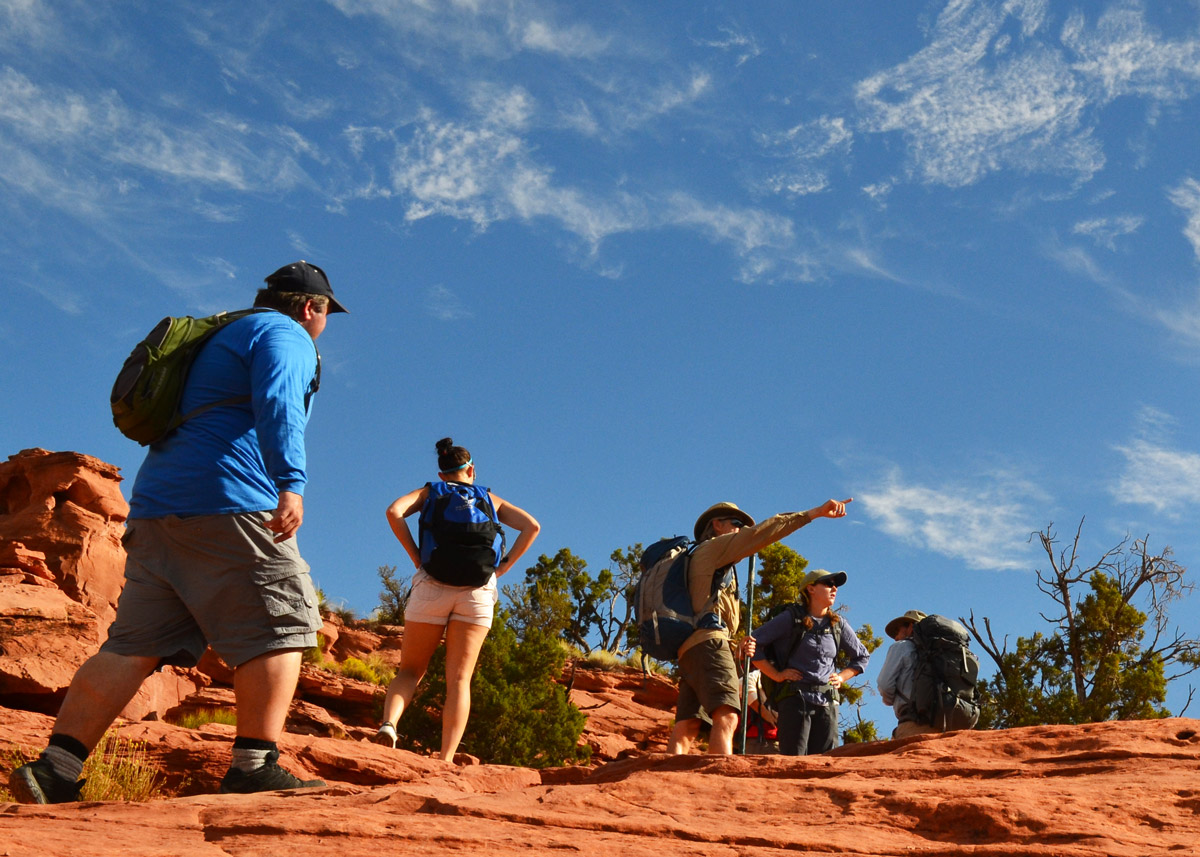Professor Researches Soundscapes in National Parks
Published: February 19, 2015 | Author: Brittany Cecil | Read Time: 3 minutes

Walking amongst the towering rock walls and hiking through creek beds you hear the various sounds of nature. A rushing river and a chirping bird are common sounds in Utah’s national parks, but what else is audible when Southern Utah University professor of psychology Britt Mace analyzes the voices of nature?
Along with 15 SUU students, Mace is researching the soundscapes of Utah’s national parks, and has found a way to utilize the sounds to increase visitor safety and help park administration know where improvements are needed.
Mace said, “We have hammered out the methodology that is being used across the country. We use physical sound equipment and then we go in and survey visitors to get their response to know exactly what kind of sounds they were exposed to and when.”
Though recent research has been conducted by National Park Service to learn the sound levels heard from coast to coast on the average summers day, the research did not get into the details that can truly help park administration in Utah.
This is where Mace and his crew will come in. The soundscape research being conducted by the Southern Utah University team will give specific information on what trails, observational points and other popular areas are in need of improvements, information that the Park Service is in need of, according to Mace.
Mace has already conducted research at Zion, Grand Canyon and Bryce Canyon national parks, now he and his students have been asked by Grand Staircase-Escalante National Monument administration to help with site management and visitor approval ratings through soundscape analysis.
One of the 15 SUU students a part of the acoustical research is Larissa Reynolds, a senior psychology major from Weber, Utah, who is using this experience to enhance her graduate school applications.
“This is an excellent opportunity to get experience as an undergrad doing research and seeing the process by which you must conduct the research has been invaluable,” Reynolds said. “Plus, I get to spend my time in Grand Staircase, which is incredibly beautiful and I get to help preserve its natural sound environment.”
Mace explained that through the sound equipment, which will be placed on a number of trails, his team will be able to conclude how many people use specific trails, what’s perceived by those visitors during their hikes, and the busiest hours and times of year. Majority of this information will come from the placed acoustic monitoring devices, but students will also conduct surveys with park visitors directly after finishing trails.
The monument administration will then use this information to improve trails and popular areas, making the monument even more visitor friendly.
Along with gathering data from Grand Staircase-Escalante National Monument, students are currently using acoustic equipment to research popular recreational sites and places in southern Utah where there are few human visitors, including several backcountry locations that might be some of quietest places in the country; their research will be used to prove that claim.
Mace and SUU students will conduct the acoustic monitoring of these sites over the next two years, along with the soundscape research continuing at the other national parks in Utah.
Photo Credit: SUU psychology professor Grant Corser, fellow researcher along with Britt Mace, with a few students conducting sound research at Grand Staircase National Monument.
Contact Information:
435-586-5400
Contact the Office of Marketing Communication
This article was published more than 5 years ago and might contain outdated information or broken links. As a result, its accuracy cannot be guaranteed.
